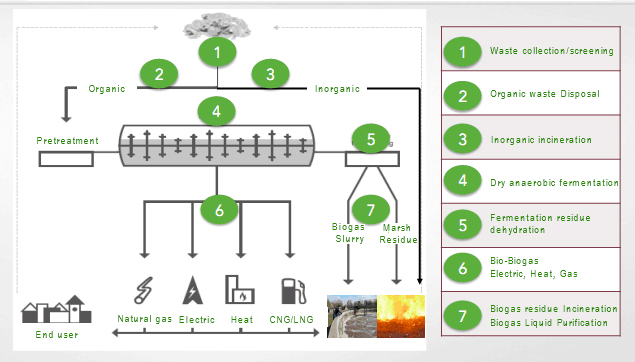msw into energy
Brief intro:
Working principle: Garbage enters the inclined downward grate through the feed hopper (the grate is divided into drying area, burning area, and burnout area). Due to the staggered movement between the grates, the garbage is pushed downward to make the …
Working principle: Garbage enters the inclined downward grate through the feed hopper (the grate is divided into drying area, burning area, and burnout area). Due to the staggered movement between the grates, the garbage is pushed downward to make the garbage pass through in turn. Each area on the grate (when the garbage enters from one area to another area, it plays a big turning role), until it is burned out and discharged from the furnace. The combustion air enters from the lower part of the grate and mixes with the garbage; the high-temperature flue gas passes through the heating surface of the boiler to generate hot steam, and the flue gas is also cooled at the same time, and finally the flue gas is discharged after being treated by the flue gas treatment device.
Features: The domestic waste incineration technology of the grate furnace operates stably, has a strong ability to thoroughly treat waste, and is suitable for continuous operation. After the optimized flue gas treatment technology, the emission reaches the standard.
However, the material requirements and processing precision of the grate are high, and the contact surface between the grate and the grate is required to be quite smooth, and the gap between the grate is quite small. In addition, the mechanical structure is complicated, the damage rate is high, and the maintenance amount is large.
Domestic waste incineration power generation projects are an important way to reduce, recycle and harmlessly treat domestic waste. As an important type of new energy power generation projects, waste incineration power generation projects have gradually shown their own advantages.


